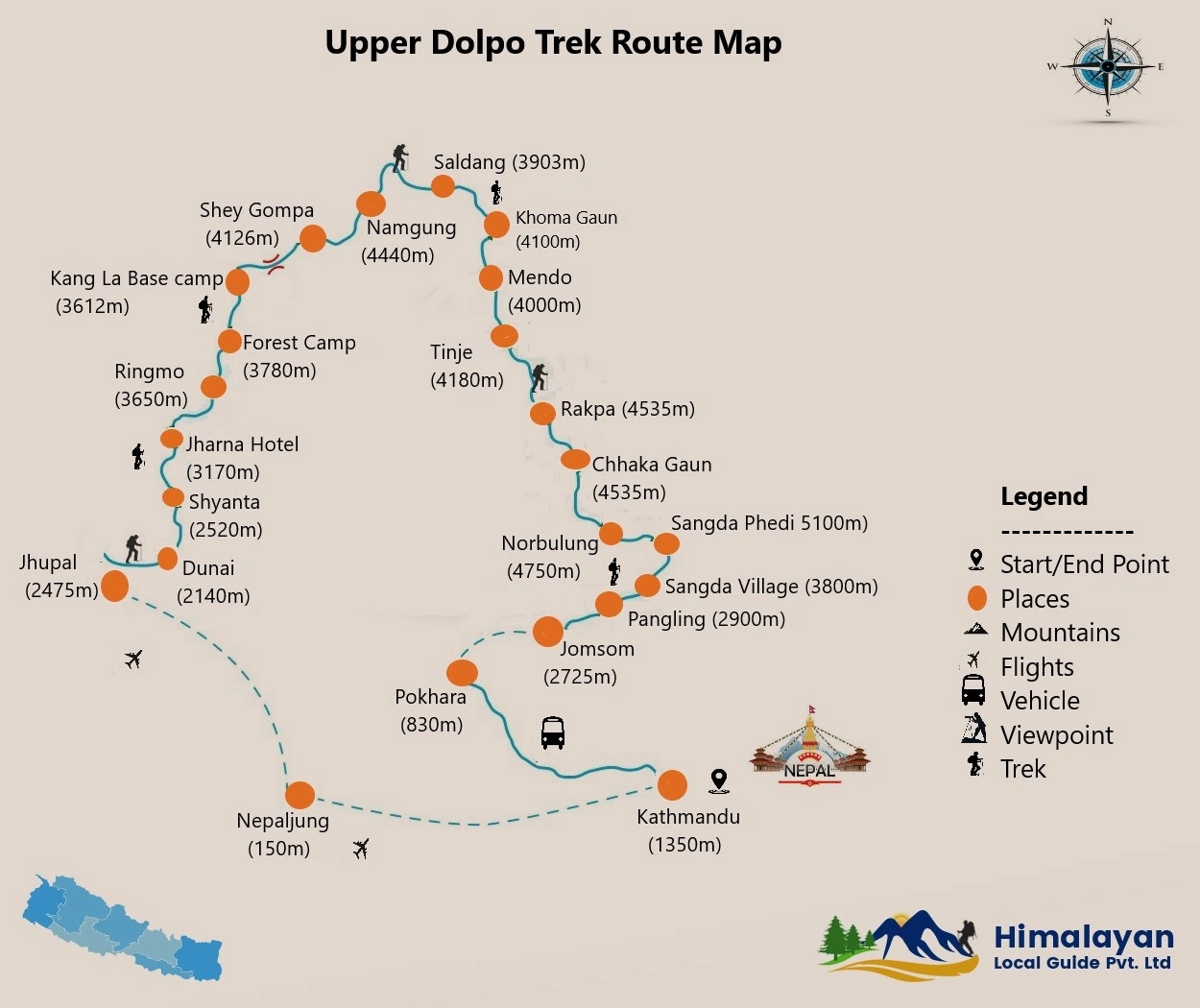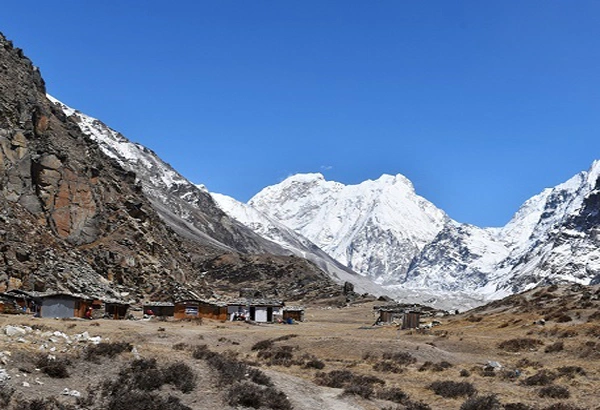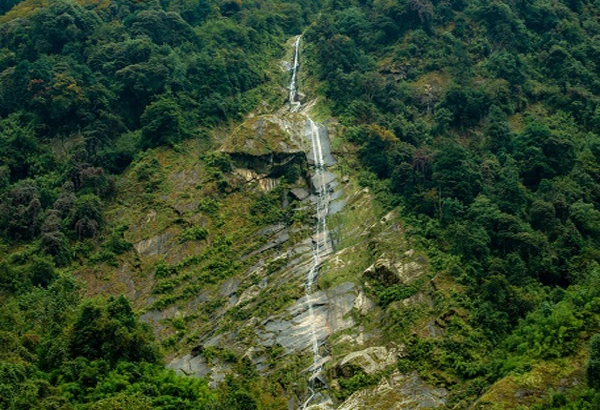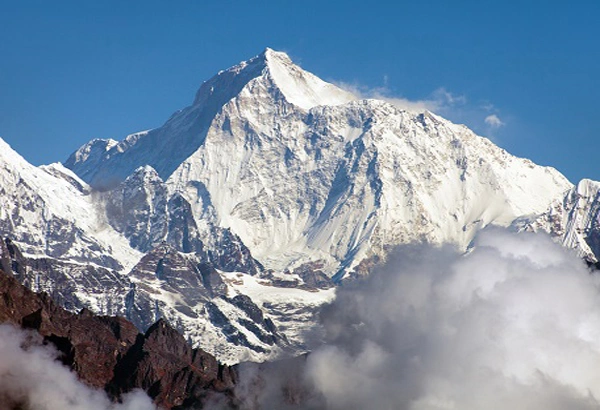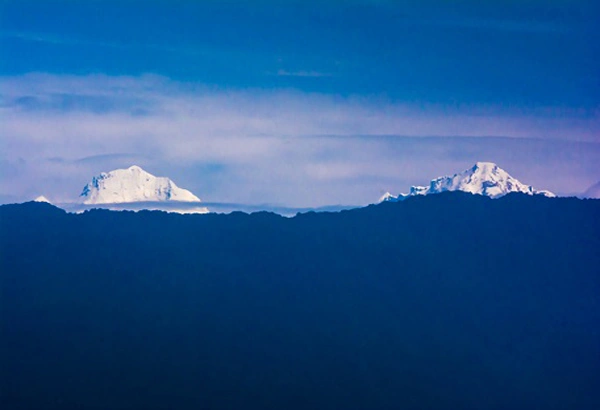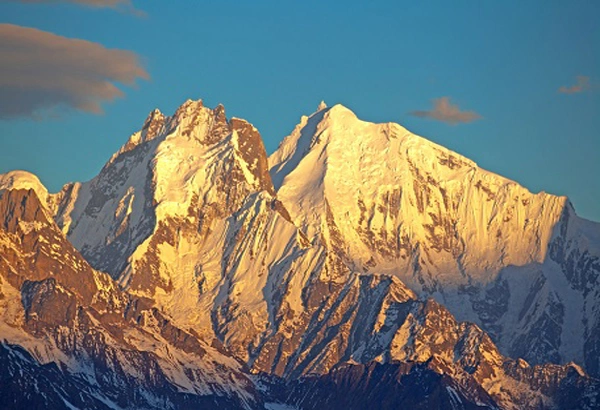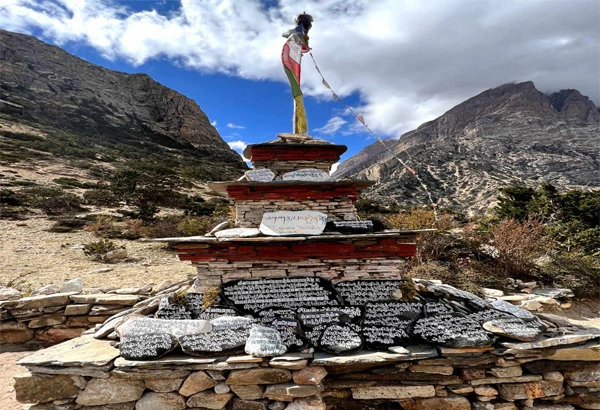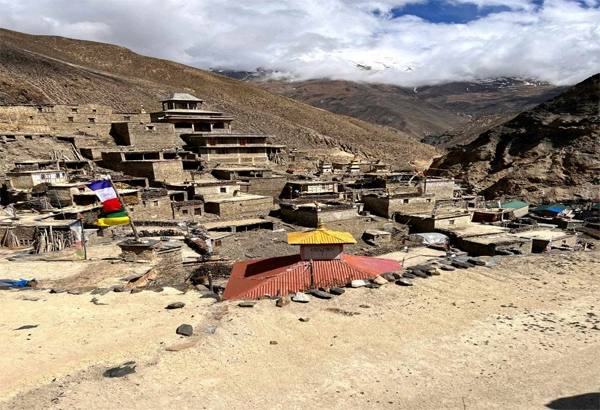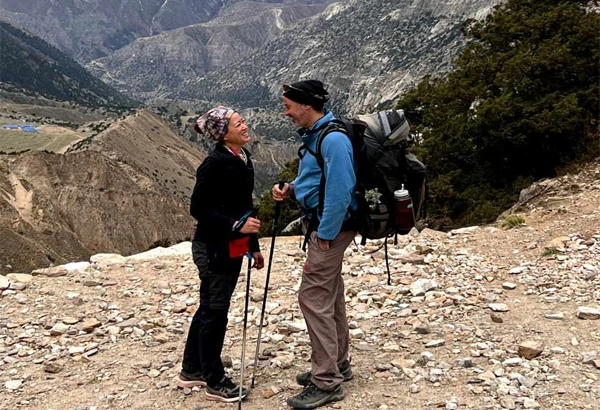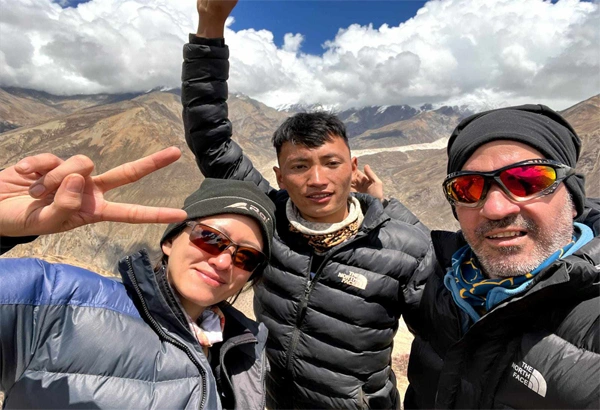Trip Highlights
- Scenic flights to Kathmandu – Juphal – Kathmandu
- A beautiful walk through the inhabitant land of the world’s highest Mountains
- Explore the ancients Buddhist Monasteries as it built for long centuries
- Enjoy the views of the incredible and landscape
- Travel around the unique lifestyle and culture of the mountain people
Detail About Upper Dolpo Trek
Upper Dolpo Trek is the most well-known rewarding trek in the Nepal Himalayas region. It lies Mid-western into the hidden gem between Tibet and Mt. Dhaulagiri of Nepal. This trek is best for those who can manage a three-week or more holiday to explore the genuine mountain lifestyle and trance Himalayas landscape in the remote part of Nepal.
It is one of the best trekking destinations in the Himalayas of Nepal owing to the attractiveness of local culture and nature. Although it’s a natural and cultural beauty, the Dolpo region has remained off the expressions of most remote valley locations and requires communications and transportation.
This trekking itinerary used to have camped for previous years but now mainly this region has a less tea houses to spend a night and eat the food while on the trekking. If the someplace has no tea house then you must use the Tent. This area is one of the restricted areas of Nepal's trekking route. Dolpo trek offers gigantic arid rolling semi-desert highlands to hike where tourist pass is restricted by the government to minimize the environmental and cultural influences.
This trek offers satisfying trekking through awe-inspiring villages of the Himalayas people’s lush forests and the high-elevation pastures and glaciers at the foot of Kanchenjunga with some of the world’s highest and best mountain views and landscapes. Along the journey, you walk through the passes ancient Buddhist Monasteries and Hindu temples. As well as in this region most of the people living include Sherpa, Rai, Limbu, Gurung, and Tibetan origins.
You can keep in mind, that the trekking trail goes along a bit of narrow valley and is not very easy as Annapurna or Everest trails, and the teahouse in the Upper Dolpo region trekking has very uncomplicated basic meals because this trekking route is not as crowded as other treks in Nepal. You will discover something new and different but a unique experience in this small piece of heaven. You can experience real Nepal its diversity of local cultures and landscapes from the starting point to the end of the trekking.
How to get Upper Dolpo
For a trip to Upper Dolpo, you must fly out from Kathmandu to Nepalgunh and Jhupal, a place in the west of Nepal. Before reaching there, you can visit Kathmandu City, a full-day sightseeing of culture and heritage sites UNESCO World Heritage Sites such as Monkey Temple, Kathmandu Durbar Square, Pashupatinath Temple, and Buddhanath Stupa. After you will take a scenic flight, which makes the more enjoyable beginning of your trek. The airplane offers a delightful aerial view of the Himalayas, which shows you how magical Nepal is. This is a mark of how charming your trekking is. After reaching Jhupal, your genuine trek to Upper Dolpo begins and you will get to visit some of the rural valleys, and beautiful landscapes in the western part of Nepal.
Distance
The Upper Dolpo Trek distance is approximately 230 to 270 kilometers, depending on the specific trails and side trips included. This trek normally takes around 22 to 28 days to complete well-known for its rural and rugged terrain with magical views of the mountains and unique cultural experiences with local communities of Sherpa and Tibetan influence.
Difficulty level
The Upper Dolpo trekking route is challenging and requires a good physical fitness level and mental preparation for the journey. However, trekking trails like ascend and descend, high passes, and several days above 5,000 meters. High altitude sickness is risky, so acclimatization days are essential for the trip. The Upper Dolpo trek is a remote trekking destination in the wilderness region, so you will stay in a tent and basic accommodation, which can be demanding for the trekkers. The previous trekking experience is highly recommended but, not compulsory. So, being well-prepared and physically fit will make the adventure more enjoyable.
Our local trekking guided to Upper Dolpo trek itinerary starts from the capital city of Kathmandu with a scenic short flight to Jhuphal and takes a step through local villages of the Limb, Rai, Gurung, and Chhetri trekking routes where we get the chance to explore the some of our time with local people in a village in the Himalayas region.
We would like to welcome you to join on this delightful trekking experience where you will be part of these royal Himalayas vistas, foremost wildlife surroundings, landscape and into the kindness of traditional local culture and communities of the Himalayas remote part of Nepal.
Minimum Number of trekkers required for this trek
Special Lower and Upper Dolpo permits for this area are only given to at least two trekkers. So, a single trekker can't obtain a permit. Please form a group of at least two trekkers and make a plan!
However, if you are a single trekker then, we will try to adjust with other trekkers who wish to witness to do this trek, if possible.
Also, if you are looking for an easy and cheapest trekking destination in Nepal then you can visit our links Everest Base Camp Trek, Annapurna Base Camp Trek, Langtang Valley Trek, Gosaikunda Lake Trek – 5 Days, Mohare Danda Trek – 8 Days, Khopra danda Trek – 7 Days, Manaslu Base Camp Trek and Annapurna Thorong La Pass Trek
Trip Itinerary
Day 01: Arrived in Kathmandu (1350meters/4,429feet).
Day 02: Permit and trekking equipment preparation day.
Day 03: Kathmandu to Nepaljung and again change fly to Jhupal.
Day 04: Trek from Jhupal to Dunai (2140m) 4 Hours Walking.
Day 05: Trek from Dunai to Shyanta (2520m) 5/6 Hours walking.
Day 06: Trek from Shyanta to Jharana Hotel (3170m) 5/6 Hours Walking.
Day 07: Trek from Jharana to Ringmo Village (3650m) 5 Hours Walking.
Day 08: Trek from Ringmo Village to Forest camp (3780m) 5/6 Hours Walking.
Day 09: Trek from Forest Camp to Kang La Base Camp (3612m) 6/7 Hours Walking.
Day 10: Trek from Kang La Base Camp to Shey Gompa (4126m) 7/8 Hours Walking.
Day 11: Rest Day.
Day 12: Trek from Shey Gompa to Namgung (4440m) 6/7 Hours Walking.
Day 13: Trek from Namgung to Saldang (3903m) 5/6 Hours Walking.
Day 14: Trek from Saldang to Khoma Ghaun (4100m) 6 Hours Walking.
Day 15: Trek from Khoma Ghaun to Mendo Village (4000m) 5/6 Hours Walking.
Day 16: Trek from Mendo to Tinje (4180m) 5/6 Hours Walking.
Day 17: Trek from Tinje to Rakpa (4535m) 6/7 Hours Walking.
Day 18: Trek from Rakpa to Chhaka Gaun (4535m) 7 Hours Walking.
Day 19: Trek from Chhaka Gaun to Nurbulung (4750m) 6/7 Hours Walking.
Day 20: Trek from Nurbulung to Sangda Phedi (5100m) 7/8 Hours Walking.
Day 21: Trek from Sangda Phedi to Sangda Village (3800m) 6 Hours Walking.
Day 22: Trek from Sangda Village to Pangling (2900m) 5/6 Hours Walking.
Day 23: Trek from Pangling to Jomsom (2725m) 7 Hours Walking.
Day 24: Fly or Bus to Pokhara.
Day 25 Drive to Kathmandu.
Day 26: Fly back to at your Home Country.
Cost Includes
- Pick up/drop/from/to International Airport by private car/van.
- 3nights hotel in kathmandu.
- One full Day sightseeing with our Professional Tour guide and by private car.
- 2 nights hotel (Hotel view point) in pokhara
- Kathmandu - Nepalgunj - kathmandu Flight
- Nepalgunj - Julphal - Nepalgunj Flight
- all meals During the trek( lunch, Dinner, breakfast with tea/coffee three times a day in a cup)
- Lodge Accommodation During the trek.
- Upper Dolpo restricted entry Permit($500)
- Lower Dolpo restricted entry permit
- Annapurna Conservation Area project (ACAP) enrty permit.
- One english speaking government license holder trekking guide and require porters( one porter for two clients)
- Guide, porters , food, accommodation, salary,Transportation,Flight ticket Insurance, equipment etc.
- First Aid Kits
- seasonal fruits, Apple,Orange, Blackberry etc
- Farewell Dinner
Cost Excludes
- Cold drink, such as beer, mineral water, cock, Fanta , Hot shower etc.
- Your International air fare.
- Nepal visa fee ( 15 Days-25 U$D and 30 Days- 40 U$D.)
- Lunch and Dinner while in Kathmandu.
- Rescue operation charge that is just in case.
- Tips for Guide and porters
Useful Information
Permits required to trek to Upper Dolpo
Trekkers should obtain three types of permits to do Upper Dolpo Trek
1. Lower Dolpo Restricted Area Permit.
2. Shey Phoksundo National Park Permit.
3. Upper Dolpo Restricted Area Permit.
Best season for Upper Dolpo Trek
The best times to trek in the Upper Dolpo region are autumn and spring. The weather is mild and sunny during these seasons, and the skies will be blue, with chances to see snow-covered at high altitudes. These surroundings make trekking breathtaking and safe.
We do not recommend trekking during the monsoon season, which starts from June to August. Heavy rains during this season can lead to landslides, making trekking risky. The winter season starts from December to February. It is freezing, and snowfall can block the trekking trail in the High Passes.
You can choose the best time for the Upper Dolpo trek in autumn or spring. It makes a safe and enjoyable experience in the breathtaking, remote area by choosing the right time for your Nepal trekking.
Accommodations
During the trip, all accommodations are on the basic twin and sharing. Our local trekking guide team leader will be managing the beautiful common room. If possible he will try to manage the best room with attached bathrooms. About the attached bathrooms it’s very difficult to get in the Himalayas regions, most mountain areas have just a common room and we must share the toilet and bathroom with other clients. The single rooms are available in the lower altitude Himalayas regions. But it is not possible to get a single room in the higher elevations; you must share with other people.
Meals
As we as during the Dolpo Trek, all kinds of meals will be provided in the Upper Dolpo region, you can take pleasure in Nepalese traditional foods like: Nepali Dal Bhat and many typical foods are available in this region. Also, they have special menus; you can choose the many different kinds of European, Italian, Chinese, and Indian foods available during the journey.
Breakfast
You can choose by a menu of your breakfast: options such as French toast with (jam, Honey and Butter), muesli, Oatmeal, Corn Flakes, cereal, hash browns, any style of eggs you would like, Gurung Bread, Tibetan Bread with (jam, honey and Pea abutter), pancake, puffy, and round and tsampa porridge and chapatti with any kinds of Tea.
Lunch
Lunchtime; you will have the opportunity to special delicious food like: Thukpa, vegetable Noodle soup, Chicken Noodle soup, mushroom soup, and fried veg. Cheese potatoes, veg eggs fried noodles, eggs. Vegetables fried macaroni, Momo (dumplings), eggs. Veg fried rice, Nepali Dal Bhat set (Dal Bhat power 24 hours), and many many more items.
Dinner
You can choose by the menu: a menu that’s similar to the options you had at lunch break time: Stews, Pizza, Thukpa, Fried Noodles, Noodle soup, macaroni, fried potatoes, fried rice, momo (dumplings), spring roll, Dal Bhat set, spaghetti and many much more items, etc.
Safe Drinking Water
In the Wilderness region, you will get normal water from the Tap or river. For this water you must use a purification medicine or filtering hand pump, also you get boiled and a bottle of water is available at lodges. While you hiking in the mountain regions, you should drink normally 4 to 5 liters per day.
Travel Insurance
Travel insurance is compulsory to have to join an adventures journey in the Nepal Himalayas. We do not sell travel insurance here; we would be pleased to recommend some of our preferred providers. While you purchase a travel insurance privacy policy, be sure it covers the following contingencies.
• Medical treatment and evacuation.
• Repatriation
• Emergency helicopter rescue.
• Trekking and climbing.
You need to get a higher tier of travel insurance in order to have these activities covered at a high elevation. For the Dolpo trekking, we recommend securing insurance to cover your trip activities of more than 6,000m/19,685 feet. Luckily travel insurance policies are easy to get online and you can compare coverage between packages rapidly and easily. The trekking under the defense of travel insurance wills an assurance your quiet of mind and protects you in the not likely incident that you need to file maintain.
AMS – Acute Mountain Sickness
Acute Mountains Sickness (AMS) or altitude sickness is one of the risks even when traveling at a high elevation. The region following getting AMS is that the body doesn’t change at the lower altitude, and the result can be boring. So, it is most important to take appropriate measures on the time. Ahead an altitude with a constant pace and good acclimatization days will help reduce the chances of getting AMS.
Likewise, you also have to keep yourself hydrated during the trip. As a result, drink very much water and keep away from alcoholic drinks as they dehydrate the body. If you are planning to travel in the local adventure journey of Nepal then do keep about things in mind.
Note: if you have any symptoms of altitude sickness then keep contacting with your personal local trekking guide our guide is trained and he knows how to solve the (AMS) Acute mountain sickness.
The main Symptoms of altitude sickness
• Headache
• Nausea
• Vomiting
• Fatigue
• Difficulty sleeping
• Dizziness
• Lightheadedness
• Loss of appetite
• Difficult to breath
Preventive measures
• Do not drink alcoholic beverages in high-elevation
• Keep yourself hydrated
• Acclimatize low altitude to a high altitude and back to sleep at the low altitude.
• Do not achieve more than 500 meters in a day
• Do not walk very fast at the high altitude.
• Walk slowly on the high elevations and keep walking.
• Do not walk alone on the way.
• Inform your guide as soon as if got any high altitude sickness.
• Drink a lot of boiled water and hot tea.
• Take garlic soup and Ginger tea, it is high altitude sickness medicine
Safety, Security, and Satisfaction
Himalayan Local Guide guarantees our valuable clients (Safety, Security, and Satisfaction). The safety is most important concern for us. For the trip, we will be carrying all necessary trekking gear, equipment and first – aid – kits box. Our professional leaders and local trekking guides have experienced knowledge and have wide first-aid training. When hiking on the way if a trekker gets (AMS) – Acute Mountain sickness due to the altitude, just normally: Headache, Vomiting, Dizziness, fatigue, or difficulty breathing then you can share with our leader. Our local trekking guide leader will give you suggestions about AMS – Acute mountain sickness and how to medicament and he does very much help then, if he/she can’t does anything then trekkers must decide, will further continue as health is most important. Just in case of emergency, the rescue helicopter will always take you back to the hospital from a high elevation. No worries, we are always here for your services and our times are always in the mountains with mountain lovers and hikers.
Passport and Visa
Travelers/trekkers to Nepal will need to make a visa when you arrive at Tribhuvan International Airport or you can get a visa from your country of Nepal embassy. Most of the travelers will be able to get an upon-arrival visa at Kathmandu Airport. Please make sure that your passport is valid for at least six months from the date of your arrival, beginning with the date that you enter Nepal. You must also bring the extra Passport size photos of you.
On Arrival Visa Fee
15 Days – 30 U$D
30 Days – 50 U$D
90 Days – 125 U$D
Necessary document
• Insurance paper.
• Passport.
• Passport-sized Photos.
• Tims Card (Trekking Information Management system Card.
• Lower Dolpo entry permit.
Trekking guide and Porter team
Himalayan local guide Pvt. Ltd provides knowledge expert government registered trained license holder Guides for your Wilderness region trek who are from the same place and know the regional trekking area well. Our local trekking guide and porter or porters cum guide are too strong and knowledgeable about the whereabouts of the place, its history, culture, floras, faunas, etc.
We are always here for your service if you are interested in trekking to these mountain areas. We will be delighted to guide you to these heavenly areas where you can rejoice and spend your leisure time with beautiful mountain sceneries and hills. It will be a lifetime local adventure experience for you.
Last-minute booking with us.
The last-minute booking with us can be made by any intended trekker/traveler the day before your journey starts. As well as, for whatever reason Himalayan Local Guide P. Ltd has a special providing for a last - minute bookings. The payment should be made 100% percent within 24 hours if we accept it. We do try our best to manage a trek at any time, and if you are booking this for the last minute then, booking can be made directly through the online form or you can send us via email, messages on WhatsApp, Viber, or calling on Cell Phone.
Responsible Travel
“Come as a Guest”.
“Go as a Friend”.
We have a strong and expert loyalty to environmental suitability for protecting our delicate ecosystems. Without a doubt, the tourism sector has brought lots of optimistic impacts in terms of wealth generation, service opportunities, infrastructure, education healthcare, etc. However, with a swell of trekkers harmful impact has also become noticeable on society and the environment. Please kindly ensure you think about the environment and are not carefully confused moreover, Himalayan Local Guide (P). Ltd. works together with (KEEP) Kathmandu Environmental Education Project and organizes eco-friendly trips for the most part environmentally responsive and culturally pleasing that get together expectations of both traveler’s/trekker’s and Communities.
WHAT SHOUL I PACK FOR THE DOLPO TREK?
Body Clothing
• Sleeping Bag
• Down Jacket
• three pairs of trekking T-shirts
• Long-sleeved shirts
• Thermal Shirt for Colder place
• Fleece Jacket
• Warm wool Sweaters
• Waterproof and windproof Jacket
• Cotton Trekking pants with folding
• Waterproof and windproof pants
Head and Face
• Sun Hat
• Wool or fleece hat
• Headlight
• Sunglass
• Sunscreen 50
• Face wipes and towel
List of Footwear
• Trekking Boats
• ¾ Paris Preferably Cotton Socks
• Crampon
• one pair of extra Sport Shoes
Nesecery Gears
• Gaiters just in case snow
• Gloves and Thick Gloves
• Big rucksack above the 40 L
• Waterproof Bag Cover
• Rain Coat
• Trekking Pole (if you needed)
• Laundry Soap
• Shampoo
• Toothbrush
• Toilet papers
• Water peals
• Bottle for drinking water
• Pen and Note Book
• Copy and Tourist Guide Book
• Camera
• battery charger
• Memory card
• Cell Phone and Charger
• Money Wallet
• Altimeters and Playing card
First aid Kid
• Diamox
• Cotton bandages
• Paracetamol
• Painkillers
• Loperamide to Control diarrhea (just in Case).
• Water purified tablets
• Lozenges
• Elastic bandages
• Thermometer
• Moleskin and sling.


